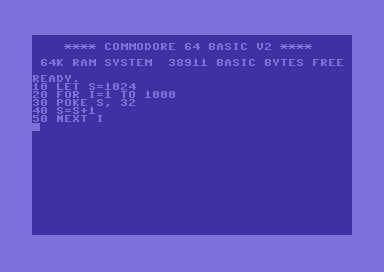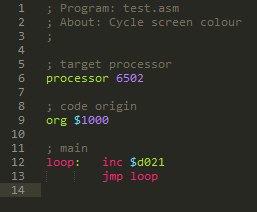
A simple effect I remember seeing in many intros & demos was what I always called a “Widescreen” effect. This is where the top and bottom borders extended all the way to the edge of the screen. It gives the impression of parts of the side border being removed. There are methods for actually removing both the top and bottom borders, but that’s more complicated and something I will look at in the future. For now, I will look at using the raster bar to toggle the screen and border colours at specific scan lines to give the impression of a wide screen display.
Continue Reading



